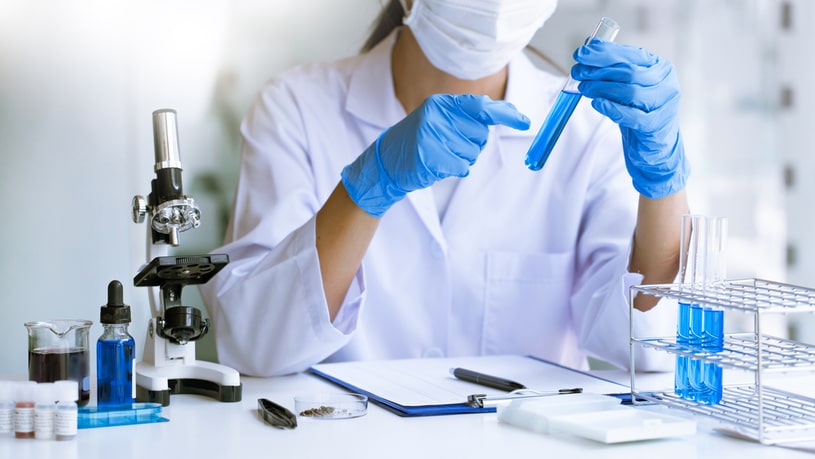Despite not having established withdrawal symptoms and physically addictive properties, LSD use can lead to psychological addiction. It produces intense effects depending on the user’s moods and may lead to unwanted occurrences such as death and self-inflicted harm. Find out what LSD is, as well as its history, the dangers of its use, and how to treat LSD abuse.
Table Of Contents:
LSD Overview
LSD, or lysergic acid diethylamide, is a hallucinogenic drug that is more commonly known by the name acid. It is derived from a parasitic fungus, which is known as ergot.
It is also known as:
- blotter acid
- mellow yellow
- yellow sunshine
- battery acid
- windowpane
- dots
- Lucy
LSD Drug Class
Lysergic acid diethylamide is a hallucinogenic drug, though it can also be referred to as psychedelic or an entheogen. Not only does it disrupt the sensory perception of its users, particularly visually and auditorily, but it can also alter the thoughts and mood of its user.
LSD is what is known as an ergot alkaloid derivative or an ergoline derivative. The lysergic acid component of the drug is derived from ergot, a parasitic fungus. It was developed in the hopes that it would possess medical benefits, but it currently has no approved application in clinical settings. It is purely a recreational substance.
While some recent preliminary studies suggest that LSD can be used to treat alcohol addiction, it remains an illicit drug without any medical use at present.
Is LSD a Controlled Substance?
In the United States, LSD is classified as a Schedule I substance, which means it is a drug with a high potential for abuse, yet with no accepted medical utility. This means that it is illegal in the United States.
Apart from the United States, acid is also illegal in the following countries:
- Australia
- Canada
- Germany
- New Zealand
- United Kingdom
It is also classified as a Schedule I psychotropic substance by the United Nations.
The History of LSD
LSD is a drug that has had a long history, indirectly through the use of its parasitic parent ergot in the past, and directly since it was first synthesized. Its botanical name, Claviceps purpurea know ergot. Midwives made use of this fungus in their attempts to induce or speed up labor.
The 19th Century
In the 19th century, ergot was well established by many physicians as being a dangerous substance. High doses were said to cause dangerously strong contractions that could cause the baby harm. It still found use in the control of postpartum hemorrhage.
1938
Albert Hofmann, a Swiss chemist working for a company known as Sandoz (now Novartis), regularly experimented in his search for medically useful lysergic acid derivatives. This was what led to the eventual synthesis of LSD.
1943
April 19th, 1943, is known as Bicycle Day. Hofmann decided to test the effects of LSD on himself, following accidental administration with mild effects on April 16th just days before. He used 250 micrograms, thought to be a minimal dose. Before long, he began to feel the drug’s effects. His assistant rode him home on a bicycle as the effects intensified.

He felt dizziness, anxiety, and fear. He hallucinated his neighbor as a scary witch. Stationary objects were said to be in constant motion. Despite this, he was said to be physically normal. The next morning, he wrote of how “The world was as if newly created. All my senses vibrated in a condition of highest sensitivity, which persisted for the entire day.”
1947
Following his experience, there was renewed interest in the substance. There were animal trials to ascertain the safety of the substance in the search for potential medical use. Interesting symptoms were observed in different species, though with no apparent harm. Sandoz eventually patented acid and called it Delysid, sold in 25 microgram tablets.
The 1950s
This decade had LSD famously used by the CIA during their MKULTRA experiments. The program was officially sanctioned in 1953 though it had unofficially started years prior. The experiment was performed in search of drugs that could be used by the CIA for mind control. It was scandalous as the subjects were unaware of what it entailed.
It was primarily a drug used in the psychiatric community. Later in the decade, it shifted to a wider population, primarily from introducing the drug to friends and fellow elites. Dr. Timothy Leary, a psychology lecturer at Harvard, was largely responsible for the drug’s availability for the general population.
The 1960s
Several scientific publications had published papers on LSD by this point. Many experimented to see if it had value for any of the following:
- Aphrodisiac
- For psychotherapy
- For criminal rehabilitation
- Treatment of alcohol addiction
- Improve creativity
- To mimic some mental illnesses
In 1963, Sandoz’s patent on LSD expired. 2 years later, they ceased production, citing a lack of regulation and misinformation around acid. The following year, The United States DEA classified LSD as a Schedule I substance. This made it illegal to produce, sell, or possess the drug. There were no medical uses found of the substance, which led to this categorization.
The liberal counterculture movement was a big thing in the 60s, with its members being known as hippies. They were frequent users of LSD who preached values such as pacifism, sexual liberation, personal freedom, and environmental safety. To date, their influence persists through more liberal sexual rights, the popularity of dietary choices such as veganism, and psychedelic fashion and music.
The Late 1970s
Lysergic acid and ergotamine tartrate, two chemicals essential for the production of lysergic acid diethylamide, were placed under strict surveillance. This greatly reduced production.
The 1980s
A return in popularity with LSD due to punk and gothic subcultures and increasing popularity of use in clubs.
The 1990s
Increasingly used, alongside MDMA, by individuals at raves and other club music parties.
The 2000s
The raiding of a large-scale LSD lab caused a significant reduction in the substance’s availability on the streets. This was a bust of the largest LSD laboratory in the Drug Enforcement Agency history and was stated to have cut down the supply of LSD by 95 percent.
The 2010s
LSD began to emerge as a more popular drug of abuse among younger people, with about 1 in every 10 people having used LSD by 2019. The act of microdosing became more popular in this decade, especially among college students.
The 2020s
In November 2020, voters Oregon voted in favor of Ballot Measure 110, which modified the penalties for possession of certain drugs. LSD was one of these drugs, and this resulted in its decriminalization in the state. This is the first state in the United States which has done such a step.
Is LSD Addictive?
While the effects of LSD and its addiction are primarily focused on the psychological part, physical dependence is uncommon. It means users will not experience any physical symptoms. Therefore, nothing will provoke them to take it compulsively. In essence, they could say it causes only mental dependence. However, this in no way indicates its use as being safe.
Regrettably, users may become tolerant. It results in the need for a higher dose to achieve the trip. This can be particularly more dangerous. It’s because it will increase the risk of overdose and various mental illnesses.
LSD Use in Recent Studies
Though the acid drug is scheduled and illegal in many parts of the world, some countries still allow for its use under research purposes. This means that new studies are still being done to learn more about the substance.
In 2020, a study aimed to revisit the use of LSD as an analgesic, based on studies done in the past that demonstrated those effects. It was found that a dose lower than the dose which produces its hallucinogenic effects were still sufficient to produce an analgesic effect.
Another 2020 study was able to determine dose thresholds towards the production of specific effects, whether subjectively judged to be good or bad. It was found that the effects that participants considered positive seemed to show a ceiling at 100 micrograms, while other unpleasant signs began to increase from their onwards.

One study performed in 2017 was able to demonstrate how LSD takes a very long time to unbind from the serotonin receptors that it attaches to achieve its effect. Also, in the same year, another study was able to find that LSD was connected to an individual’s attribution of personal relevance to stimuli, in this case, music.
A 2018 study found that 17% of respondents, all young adults, admitted to having microdosed before.
In 2019, 10.06% of respondents in the National Survey on Drug Use and Health admitted to having used LSD before, indicating its level of popularity.
Dangers of LSD Use
The use of LSD will increase the risk of the addict developing schizophrenia, can cause psychosis, and can produce suicidal thoughts, which often lead to death. LSD is considered one of the most powerful recreational hallucinogens. Tolerance to this drug can build up in as little as a week, and long-term LSD abuse can cause severe delusions that result in harm to self or violent behavior towards others.
Some of the consequences that can arise from the abuse of lysergic acid diethylamide, particularly in the long-term, include the following:
- Tolerance: Individuals will require larger doses to achieve the same effect they had before. These higher doses can increase the risk of other side effects such as hyperthermia and sudden heart failure.
- Hallucinogen Persisting Perception Disorder (HPPD): This is a disorder whereby an individual who abuses hallucinogens has a recurrence of visual hallucinations similar to those experienced during an acid trip. To be diagnosed, such flashbacks must occur during a period of abstinence from the drug and must disrupt the person’s daily life. This condition may last for years, and while it can be managed with medication, there is no definitive cure. Further use of LSD will worsen it and may turn into acid overdose.
- Persistent psychosis: This condition can occur in an individual even following a single use of a psychedelic drug such as LSD. This condition involves visual and mood disturbances, a sense of paranoia, and disorganized thoughts.
- Severe depression
- Impairment of judgment, which may pose a threat to their health
Deaths can occur as a result of the abuse of LSD. Fatalities result from the individual’s irrational actions while under the influence of the drug due to the delusions or hallucinations they experience.
In many cases of death, there is no information on what hallucinations or delusions the individual experienced that resulted in their actions that led to their death.
One example is a 20-year-old man who had the police called on him following violent behavior. He was said to have rammed his head into the side of a police vehicle, causing a large dent, and thrashed and slammed himself around inside the vehicle after he was taken into custody. He was taken to the hospital, where he eventually died. He was found to be under the influence of LSD.
In Australia, a man under the influence of both MDMA and LSD died from multiple injuries he sustained after falling off his hotel room’s seventh-floor balcony. Before this, his state of mind could not be affirmed, but his death was likely contributed to by the delusions that patients on hallucinogens have, such as the thought that they can fly.
One last case was of a teenage boy who killed himself by driving his car straight into a street pole while he was under the influence of acid. He had his delusions confirmed by a text message that he sent to his girlfriend, which stated that he was on “a higher plane of existence,” and he said that “he was going to move onto another dimension.”
Deaths due to abuse of lysergic acid diethylamide are due to the actions the individuals take while under its influence instead of absolute toxicity.
Dangers of Psychedelic Microdosing
Psychedelic microdosing is a practice whereby small doses (10 micrograms) of acid are taken to improve creativity and problem-solving ability, treat anxiety and depression, increase energy levels, and stabilize emotions.
Despite these supposed positive effects, there are downsides to the use of even microdoses. A study examining microdosers found that a significant amount experience negative side effects, particularly psychological, such as paranoia, anxiety, and depression. These occurred acutely.
Though there is little evidence to objectively demonstrate the effectiveness of microdosing, those who have microdosed before state, it leads to the purported effects.
LSD Abuse Symptoms
Individuals who abuse acid can experience a variety of symptoms. These symptoms and signs can help in figuring out if a loved one may be abusing LSD.
These include the following physical signs:
- Increased heart rate (tachycardia)
- Increased blood pressure (hypertension)
- Increased body temperature (hyperthermia)
- Excessive sweating
- Dilated pupils
- Loss of appetite
- Dry mouth
- Tremors
- Impaired coordination
- Nausea
- Vomiting
- Restlessness
The psychological and behavioral changes that this drug can cause include:
- Insomnia
- Psychosis
- Depression
- Paranoia
- Anxiety
- Impaired judgment
- Warped sense of time and space
- Emotional lability
- Memory impairment
- Inattention
- Poor decision-making skills
LSD Abuse Statistics
LSD was highly popular in the 1960s, but its abuse is still rampant even in this era, particularly among younger people.
In 2019, the Monitoring the Future Study found that 10% of respondents over the age of 12 admitted to using LSD at least once in their lifetime. This shows the level to which the use of acid has penetrated the ranks of younger people. However, only 0.8% of them admitted to using it in the past year.
The prevalence of recent acid abuse is most predominant among people between the ages of 18 and 25, as 3.5% of them admitted to having used it in the last year, which is the highest amongst any age range, and 9.8% of them said they had used it in their lifetimes.
Lifetime use is highest among those over the age of 26. Over 1 in 10 respondents admitted to having used the drug at any point in their lives.
LSD Addiction and Withdrawal
Is LSD addictive? The answer to this is that acid drug is not considered to be a physically addictive substance. Many addictive substances will result in compulsions and cravings to use the drug. However, it is rare for LSD to do this. It is considered extremely rare for acid abuse to result in physical dependence. It can pose the risk of causing psychological dependence. This occurs in individuals who have gotten so used to the effects that the substance provides them that they want to use the drug as much as they can.

However, it can cause the development of tolerance, which is frequently seen with addictive substances. Its tolerance develops rapidly, and after only a few uses, abusers of the drug need to increase their dosages to feel the same effect they previously felt. Acid tolerance is unique, though, as it tends to resolve after a few days of not using the drug.
In individuals who have developed a psychological dependence on the drug, they may experience withdrawal symptoms on abstaining from the substance.
LSD Withdrawal Symptoms
Individuals who have used this substance chronically may experience any of the following symptoms on stopping use of the drug:
- Depression
- Anxiety
- Fatigue
- Insomnia
- Excessive sleeping (hypersomnia)
- Difficulty differentiating hallucinations from reality (depersonalization)
- Flashbacks to hallucinations that were had
- Discomfort
- Restlessness
- Inattention
- Confusion
Factors That Affect LSD Withdrawal Symptoms
Factors that determine the intensity of the withdrawal symptoms:
- How long was the person taking LSD?
- How often was the person taking LSD?
- How much LSD was he taking?
- His or her state of mind.
These withdrawal symptoms can be very uncomfortable or distressing for individuals going through them, so they may ultimately resort to using the drug again to relieve them. This is why it is best to undergo detox and rehabilitation in a qualified treatment center.
LSD Inpatient Rehabilitation and its Importance
Leaving LSD addiction unchecked can be extremely dangerous, as the psychological changes that it elicits can cause behavior that may cause severe injury or even death to the individual or others. The hallucinations or delusions that may occur cannot be controlled so the danger of acid use can occur at any time, even for a first-time user. This gives more reason as to why it is an illegal substance in several countries.
Research shows that physical addiction to LSD is extremely rare, but psychological addiction seems to be capable of developing and quite intensely at its worst. If this occurs, these people will experience withdrawal symptoms such as those listed in the previous section when they abstain from the substance.
There have been some instances where individuals who abuse acid have demonstrated withdrawal symptoms similar to cocaine or alcohol on cessation of use of the drug.
These cases are rare, and when they occur, the individual will likely have to deal with symptoms related to dissociation. Regardless of this, withdrawal symptoms, when present, must be treated.
Inpatient rehabilitation programs are the best option for such individuals due to the benefits that they provide for the person in terms of safety and efficacy in kicking the habit.
Below is an overview of the most important reasons why a professional LSD program should be preferred over at-home and self-care steps by individuals who have started to abuse this drug.
Monitoring Of Psychological Well-Being
Mental health often takes a turn for the worse when a person develops an addiction to any substance. It is usually found that those who suffer from an addiction or dependence on acid are also at risk of issues like depression, anxiety, and even potential mood disorders.
LSD rehab centers can provide a person with professional tools and solutions that assist with the monitoring of these psychological complications that might have developed during the addiction. Appropriate treatment can also be provided to the person while they undergo treatment for LSD dependency.
Monitoring Of Physiological Well-Being
Similar to how a person is at risk of psychological complications when they become addicted to LSD, the chemicals in the drug may also have specific physiological effects. A tolerance could build-up, for example, leading to an increased risk of overdose.
When professionals also monitor physiological well-being at an LSD rehab, if any of these issues developed can be addressed quickly.
Prevents Access to Drug Sources
Patients who abuse a drug have their dealers and sources who fuel their addictions. They have become comfortable enough at obtaining from these sources and this allows them to continue to buy amounts large enough to get past their tolerance and provide the desired effects.
When a patient decides to come for inpatient treatment at a professional center, these sources will no longer be able to be accessed. This removes the temptation that the addict would have if they were at home.
Removes Social and Environmental Stressors
For many addicts, drug use can be an option for escape from the troubles that their work, school, or relationships with others are causing them. These stressors may push individuals to abuse substances and they may find it easier to give in when they are dealing with withdrawal symptoms. By keeping them away and isolated from these stressors, they can be more focused on their task of stopping their drug abuse.
Allows for Interaction with Other Addicts
Inpatient treatment places addicts in a facility where they are monitored around the clock to ensure both their psychological and physical wellbeing. This means that a center has several individuals dealing with the same issue – addiction. Group therapy sessions allow for contact between addicts. They can support one another in their journey towards abstinence, as well as using their stories to educate others and learn.
Following treatment, withdrawal symptoms should be settled for the most part. However, flashbacks are one symptom that may persist for an indefinite amount of time after the last administration of the substance. The individual may have flashbacks of hallucinations they had up to years after they abstained.
LSD Recovery Program Entry
The processes involved in getting an addict back to better health can be broadly divided into three segments. These are assessment, professional detoxification, and therapies.
Assessment
Before being admitted into a program to help an LSD abuser, a full assessment is required. Someone known as an intake counselor will evaluate and determine the addiction’s severity. The counselor will then have a good idea of what is required to help the patient. They can also determine how the treatment should work. For instance, in a patient who needs HPPD recovery, the process will differ from a person simply quitting the substance.

In mild cases, recovery may need little intervention. Such patients may be counseled on outpatient treatment. In cases of LSD abuse, however, patients will require inpatient treatment to closely monitor and prevent the high risk of relapse.
Professional Detoxification
When detoxification is required, such as in the recovery following a bad acid trip, inpatient treatment is preferable. In the initial period, the patient is placed in an isolated area of the center to assist the detox. Withdrawal symptoms may be experienced during this phase. Some medications are given to help to cope with these symptoms and prevent relapse.
A licensed and quality rehabilitation center takes each case of addiction unique to tailor service precisely to each individual. Professionals at these centers will assist with the entire process. There are service providers who will assist with detox and counseling services that the patient will be offered to improve the chance of recovery.
Therapies
Once the system is completely cleared of lysergic acid diethylamide, the following therapies are instituted for treatment:
- Cognitive-behavioral therapy (CBT)
- Psychotherapy and counseling
- Vocational therapy
- Peer conversations
Patients diagnosed with HPPD during the assessment stage will be provided with medication to manage the symptoms. Benzodiazepines are effective in recovery. Less effective medications include:
- Selective serotonin reuptake inhibitors (SSRIs)
- Clonidine
- Naltrexone
- Beta-blockers
- Calcium channel blocker
It is important to note that these show controversial results during treatment and are not given routinely.
LSD Relapse
As a matter of fact, relapse is an indispensable and often a widespread problem of LSD addiction. As a result, the user becomes a victim of the drug dependence problem.
Users refrain from taking it for a certain period. Meanwhile, the withdrawal becomes so bad that they get back to taking it. It is especially the mental ones in this case. This is what they call an LSD relapse. Addicts get undesirable psychological effects that occur during the abstinence. Those are the LSD withdrawal symptoms.
During LSD withdrawal, some patients may experience “flashbacks.” Typically, a flashback is very much like the experiences users used to have when they were on the drug.
It can last for months or even years after one has become sober, although LSD completely leaves the system in 36 hours.
The two main driving factors that provoke LSD relapse. First, it is the cravings for some mental pleasure. Second, it is the need for an escape from some unpleasant experiences.
Complications Of LSD Relapse
The problems of LSD relapse are more psychological than physical ones. However, the frightening experiences resulting from a relapse warrant immediate care. This way, we can prevent further damages.
Here are some typical problems that may occur after a relapse:
- A full-blown addiction
- Upgrade to more dangerous drugs
- Elevated risk of falling prey to robbery, rape, or even murder
- LSD-induced psychosis or other long-term mental health problems
- Falling income or loss of job
- Possible legal charges
- Diminished quality of life
Avoiding LSD Relapse
A little bit of determination and a few helping hands can help one prevent LSD relapse. Stick to the goals and keep the urges away by distracting the mind to something healthy. For instance, reading books, meditating, and exercising. Moreover, enjoying a holiday with loved ones can be a great way to keep the mind busy.
It does not cause any problems with any bodily functions. Notably, LSD relapse, in most cases, occurs due to the urge to get high.
There are no medications that can prevent relapse. However, if hallucinations get out of control, the doctor may recommend some medicine.
In case one happens to experience a severe symptom, talk to them right away.
In the same way, they may also suggest some self-help measures. It will aim to keep a patient clean for an extended duration. Therefore, be thorough when talking to them. Express fair feelings and expectations. Then, seek genuine help.
Some symptoms of LSD abuse can be hazardous. This is as the hallucinations, thoughts, and delusions under the influence may induce suicidal thoughts. As a result, acid abuse should be attended to as soon as possible.
The rehabilitation period is needed for complete treatment of those who abuse LSD and are trying to recover. This time will require behavioral therapy, counseling, support of the family, and mending relationships with friends.
It is never too late for an addict to get help for their addiction. The sooner they do, the better. If there is a loved one or relative who needs help for their LSD addiction, contact a professional treatment center to take the first step to help them get better.
Page Sources
- United States Drug Enforcement Agency, Drug Scheduling, https://www.dea.gov/drug-scheduling
- Lee MR, The history of ergot of rye (Claviceps purpurea) I: from antiquity to 1900, 2009, https://pubmed.ncbi.nlm.nih.gov/19847980/
- Breen B, Albert Hofmann Discovers LSD, 2013, https://origins.osu.edu/milestones/april-2013-albert-hofmann-discovers-lsd
- Grant B, Was It All Just A Hallucination? The CIA’s Secret LSD Experiments, 2015, https://scholarworks.arcadia.edu/cgi/viewcontent.cgi?article=1013&context=senior_theses
- Andersson M, Kjellgren A, Twenty percent better with 20 micrograms? A qualitative study of psychedelic microdosing self0rapports and discussions on YouTube, 2019, https://harmreductionjournal.biomedcentral.com/articles/10.1186/s12954-019-0333-3
- DiPaolo M, LSD and The Hippies: A Focused Analysis of Criminalization and Persecution In The Sixties, 2018, http://pitjournal.unc.edu/content/lsd-and-hippies-focused-analysis-criminalization-and-persecution-sixties
- Ramaekers JG, Hutten N, Mason NL, et al., A low dose of lysergic acid diethylamide decreases pain perception in healthy volunteers, 2020, https://journals.sagepub.com/doi/full/10.1177/0269881120940937
- Holze, F., Vizeli, P., Ley, L. et al., Acute dose-dependent effects of lysergic acid diethylamide in a double-blind placebo-controlled study in healthy subjects, 2020, https://www.nature.com/articles/s41386-020-00883-6
- Wacker D, Wang S, McCorvy JD, et al., Crystal Structure of an LSD-Bound Human Serotonin Receptor, 2017, https://www.cell.com/cell/fulltext/S0092-8674(16)31749-4
- Preller KH, Herdener M, Pokorny T, The Fabric of Meaning and Subjective Effects in LSD-Induced States Depend on Serotonin 2A Receptor Activation, 2017, https://www.cell.com/current-biology/fulltext/S0960-9822(16)31510-X
- Hermle L, Simon M, Ruchsow M, Geppert M, Hallucinogen-persisting perception disorder, 2012, https://www.ncbi.nlm.nih.gov/pmc/articles/PMC3736944/
- National Institute on Drug Abuse, How Do Hallucinogens (LSD, Psilocybin, Peyote, DMT, and Ayahuasca) Affect the Brain and Body?, https://www.drugabuse.gov/publications/research-reports/hallucinogens-dissociative-drugs/how-do-hallucinogens-lsd-psilocybin-peyote-dmt-ayahuasca-affect-brain-body
- National Institute on Drug Abuse, Hallucinogens Trends & Statistics, https://www.drugabuse.gov/drug-topics/hallucinogens/hallucinogens-trends-statstics
- Modak T, Bhad R, Rao R, A rare case of physical dependence with psychedelic LSD - A case report, 2019, https://www.tandfonline.com/doi/abs/10.1080/14659891.2019.1581286

 Authored by
Authored by  Reviewed by
Reviewed by 

